#Ripley's Believe it or Not
Text

#tv shows#tv series#polls#ripley's believe it or not#mark camacho#russell yuen#ellen david#1990s series#canadian series#french series#have you seen this series poll
20 notes
·
View notes
Text
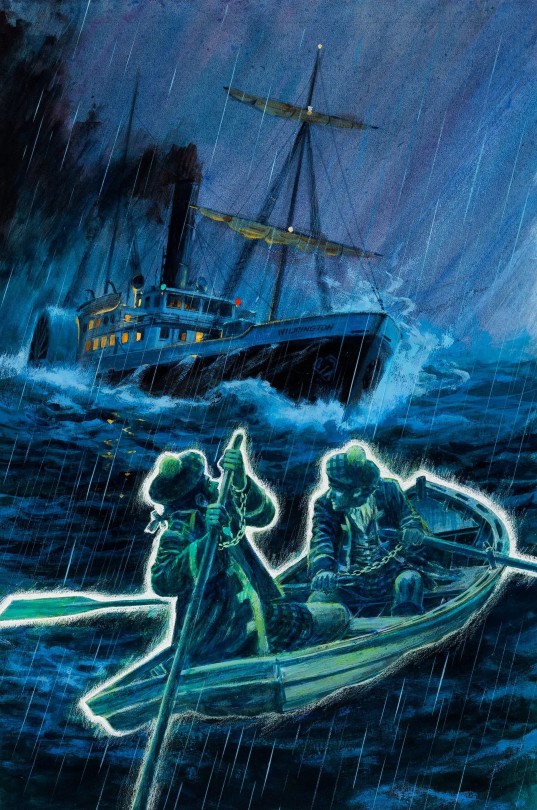
The Ghosts of Two Kilted Scotsmen - art by George Wilson (1977)
#george wilson#ripley's believe it or not#true ghost stories#gold key comics#horror comics#cover art#comic art#seventies#1977
284 notes
·
View notes
Text
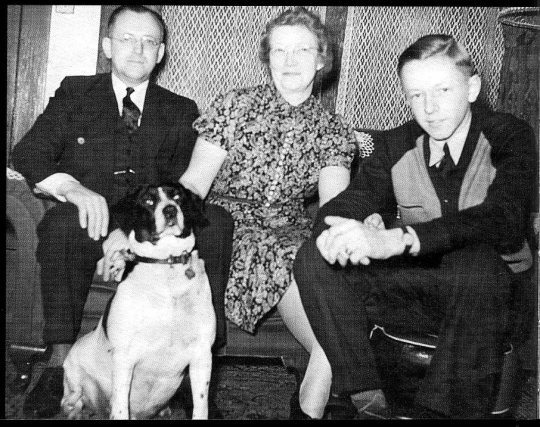
Charles M. Schulz (right) with his parents (Carl and Dena) and dog
(happy belated birthday!)
According to Schulz the dog ate "pins, tacks, and razor blades"!
Below is a drawing Schulz made of his dog which he submitted for publication in the "Ripley's Believe it or Not!" section of the newspaper.

86 notes
·
View notes
Text

12 notes
·
View notes
Text

Ripley's Believe It or Not! True Ghost Stories #66 Original Cover Art (Gold Key, 1976).
#ripley's believe it or not#true ghost stories#unidentified artist#gold key comics#cover art#ghosts#paranormal#painting#horror art
155 notes
·
View notes
Text

Golden Press editions on my bookshelf
#golden press#gold key#dell comics#walt disney#christmas parade#ripley's believe it or not#true ghost stories#lassie#star trek#enterprise logs#abe lincoln jr#hello kitty#kewpie#sammy harkham#anouk ricard#jordan crane
22 notes
·
View notes
Text

Palance's Believe It or Not
16 notes
·
View notes
Text


my new music video droppin end of da month!! keep streaming new mixtape + subscribe now🆕📼🔜
#me#airmaxx#music video#otw#ripley's believe it or not#movie stills#film stills#music#hip hop#new single#new song#spotify playlist#spotify#reblog#youtube#exclusive#subscribe#streaming#keep streaming#summertime slime#new mixtape#free slime#free young thug#artists on tumblr#staff picks#fyp#for you#fypツ#for you page#on repeat
18 notes
·
View notes
Text






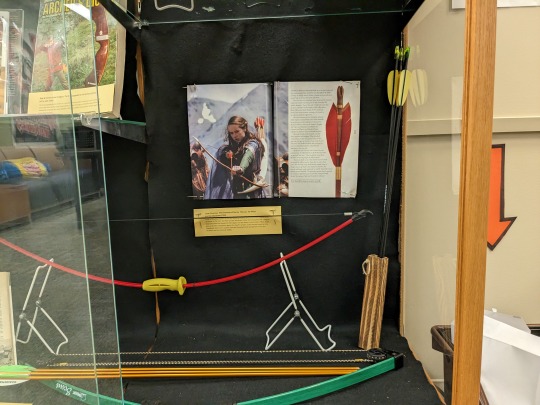

Check out our archery exhibit! From Cupid to Katniss: Archery in Popular Culture shows the range (get it? like an archery range?) of material we have about archery in the United States. If you'd like to learn more about what's featured here, click on the read more below!
The Browne Popular Culture Library (BPCL) would like to thank the Wood County Park District (WCPD) for lending us a compound bow and set of arrows. WCPD offers both a range for archers to use with their own equipment and archery lessons with equipment provided. For more information, please visit wcparks.org.
The BPCL would also like to thank graduate student supervisor John King for lending us his bow and arrows for this exhibit.
The Browne Popular Culture Library, founded in 1969, is the most comprehensive archive of its kind in the United States. Our focus and mission is to acquire and preserve research materials on American Popular Culture (post 1876) for curricular and research use. Visit our website at https://www.bgsu.edu/library/pcl.html.
Introduction
Archery has been an important part of many cultures around the world for over 70,000 years, dominating hunting and warfare as the main long-range weapon until firearms became more effective and popular in the 1500s. Archery as a recreational sport emerged in the 1800s in Great Britain and has since spread around the world. Today, archery is practiced in a variety of forms, including competitive and traditional methods, as well as bow hunting.
Because archery has played such an influential role in various cultures, there are many famous archers in folklore, mythology, and popular culture. In the 2010s in the United States, several highly successful movies brought a new wave of popularity to the sport, especially among girls and young women. This exhibit displays only a few of the hundreds of examples of archery in American popular culture.
Different Kinds of Bows
Although there are many different styles of bows around the world, there are three main kinds seen in American popular culture.
Recurve
A recurve bow is what many of the archers in this exhibit use – such as Princess Merida, Katniss Everdeen during the Games, and Kate Bishop – and is the only kind of bow allowed in Olympic archery. The ends of the bow curve away from the archer and are able to store more energy than a traditional longbow at shorter lengths, making them ideal for a wide variety of people. Recurve bows can be made in one long piece, or in three pieces that come apart for easy transportation.
Compound
Compound bows use a system of cables and pulleys to help the archer draw their arrow and store the maximum amount of energy without requiring the archer to hold extreme weight before shooting their arrow. Compound bows are very new compared to recurve bows, as they were only invented in the 1960s. They are very popular among both competition archers and hunters for their increased precision and energy storage.
Longbows
Longbows are one of the oldest kinds of bows in archery history, with examples dating to around 3300 BCE. When strung, they make a D shape and do not curve. Medieval England made heavy use of the longbow in wartime to the point where most common men were required to train with the longbow in case war was declared against a neighboring kingdom. Longbows require more brute strength to use than either recurve or compound bows, and frequent use of the longbow leaves noticeable changes in an archer’s skeleton.
Featured Material
Carolyn Griffith, Frank Gandy, Larry Wise, and Jim Brown, Bear Archery Catalog (1986)
Bear Archery was founded in 1933 by Fred Bear, who wanted to encourage archery as a sport and method of hunting. This 1986 issue of their catalog highlights prize-winning archers who use Bear Archery products. On the right is Jim Brown, the first Black archer to win specific national and international championship titles, despite facing racist discrimination from the mostly white archers he competed against. He started his archery experience at the Mohican Bowmen, the first all-black archery club in the US, in southern Maryland.
The Fundamentals of Japanese Archery (1937) by Toshisuke Nasu, trans. William R. B. Acker
Although Japanese archery – known as kyūdō – similarly saw a decline after the introduction of firearms in the 1500s, its modern version differs from American and European archery in both form and equipment. Kyūdō bows are much longer than western bows, and kyūdō archers pull the arrow back much further than western archers. As a martial art, kyūdō includes spiritual as well as physical development, though this varies wildly between different dōjō. Unlike many Japanese martial arts, kyūdō never became very popular in the United States. One of the main American books about kyūdō is Zen in the Art of Archery (1948) by Eugen Herrigel, which misrepresents the sport as far more mystical than kyūdō actually is. The book on display here, The Fundamentals of Japanese Archery, a translation by William R. B. Acker of instructions by kyūdōka (kyūdō master) Toshisuke Nasu, is more focused on form than spirituality.
Archery (1941), Boy Scouts of America Merit Badge Series
Merit badges in the Boy Scouts of America encourage young scouts to explore and master activities promoting character, citizenship, personal fitness, and leadership. Archery is one of the oldest merit badges and dates back to 1911. When this handbook was written in 1941, Scouts were required not only to learn how to shoot properly, but also to explain range safety rules; proper equipment construction, maintenance, and storage; and the history of archery as a sport.
Princess Merida of Dunbroch, Brave (2012) poster
Merida, the strong-willed daughter of King Fergus, refuses to be married off to her father’s allies and exploits the rules of the Highland Games to compete in an archery tournament, which she easily wins. Merida’s form is considered highly accurate for a recurve archer, especially during the tournament scene in which she declares, “I am Merida, first born descendant of Clan Dunbroch, and I’ll be shooting for my own hand!”
Ann Marston, Shooting Star: The Amazing Life of Ann Marston (2007) by Alana Paluszewski
Although she was born in England, Ann Marston was a successful figure in multiple American popular culture industries, such modelling, pageantry, music production, and, of course, archery. Marston started her archery journey overseas before her family emigrated to Detroit, MI, in order for her father to work at an archery shop. Marston won many junior titles, including first place at the Maumee Valley Bowmen Invitational Tournament in Toledo, OH, and her record-breaking scores enabled her to compete among adult women at age 15 in the 1954 National Field Archery tournament. She also competed in Miss Michigan and, later, Miss America 1960, using archery as her talent demonstration. Because of her youth, skill, and All-American appearance, Marston was a frequent guest on talk shows and in magazines. Unfortunately, Marston had to give up archery when her vision began to fail due to complications from diabetes. Before she passed away at age 32, she managed several rock bands from the Michigan area.
Apollo and Artemis, The Trials of Apollo: The Hidden Oracle (2016) by Rick Riordan
The Greek gods Apollo and Artemis are perhaps two of the most well-known archers from world mythology. They are often attributed with inventing archery and teaching the sport to mankind. In the world of Percy Jackson – the demigod son of Poseidon – Apollo and Artemis play minor roles, until the Trials of Apollo series, which stars Apollo as a god stripped of his divinity and forced to live amongst mortals.
Katniss Everdeen, The Hunger Games (2008) by Suzanne Collins, plus doll.
In The Hunger Games trilogy, Katniss Everdeen volunteers in place of her sister to compete in a battle royale organized by a tyrannical government. Katniss survives in part due to her skill with a bow and arrows, which she uses to hunt food and kill her competitors. The Hunger Games was adapted into a series of four films in 2012. Jennifer Lawrence, the actress who played Katniss, was taught by bronze-winning Olympic archer Khatuna Lorig in how to accurately shoot a recurve bow for the film. The popularity of The Hunger Games film led to a surge of young girls and women joining archery as a sport.
Kate Bishop/Hawkeye, Marvel Comics/Marvel Cinematic Universe
Kate Bishop first made an appearance in Young Avengers #1 (April 2005; pictured here) as a headstrong civilian trained in a variety of martial arts, including a bow and arrows borrowed from the previous Hawkeye, Clint Barton. She starred in her own series in 2016 and again in 2021, among other appearances, as well as in the Disney+ miniseries Hawkeye (2021), where she is played by Hailee Steinfeld. Although Steinfeld learned how to shoot properly for the role, there were no arrows on her bow – they were added later by CGI.
Bow & Arrow Archer’s Digest: The Encyclopedia for All Archers (1971) ed. by Jack Lewis
The Encyclopedia for All Archers is a comprehensive guide to the practice of archery. It covers the history of archery; bowmaking; target shooting; and bowhunting. Although somewhat outdated, the encyclopedia is still an excellent resource for people wanting to learn about archery.
Ripley’s Believe It or Not! Oddities in Sports (1968) by Ripley Enterprises, Inc.
This 50th anniversary celebratory edition for Ripley’s Believe It or Not writes that a man named Baquir Khan Najmai Sani performed “the most amazing feat of archery in all history!” Despite Ripley’s claim that all the stories featured in their books are true, the accuracy of this story is questionable, with no known sources to back it up. However, there are many different kinds of archery trick shots, such as blowing out a candle flame without touching the wax, so Baquir Khan Najmai Sani’s trick is definitely possible! Just difficult.
Archery Handbook (1954) by Edmund H. Burke
Having good arrows that are as identical as possible is one of the most important parts of practicing archery. While modern arrows are made from aluminum or carbon fiber, arrows have historically been made of a variety of wood, such as Port Orford Cedar or birch. This spread from the Archery Handbook shows women mass producing wooden arrows, though the book itself gives instructions for archers to make their own arrows and other equipment.
Susan Pevensie, The Chronicles of Narnia: The Lion, the Witch and the Wardrobe (1950)
Susan is the second-oldest of the four Pevensie children who travel to the magical world of Narnia. In The Lion, the Witch and the Wardrobe, Father Christmas gifted her a magical bow and arrows that always hit their target. In a later book, Prince Caspian (1951), Susan wins an archery competition against the dwarf Trumpkin. Susan was portrayed by Anna Poppelwell, seen here in a photo from the illustrated movie companion to The Lion, the Witch and the Wardrobe (2005).
Adaptive Archery Instruction Manual by USA Archery
Archery is very easy to adapt for people with a wide range of disabilities. USA Archery, the main governing body for Olympic-style archery in the US, has made multiple resources available for coaches and ranges to use when teaching archery in different ways. Adaptations include everything from specialized equipment to range modifications for wheelchairs and canes to smaller group classes. Silver medal Paralympian Matt Stutzman – also known as the Armless Archer – uses his shoulder and legs to shoot instead of his arms and hands.
#bgsu#archery#adaptive archery#exhibits#bear archery#boy scouts#kyudo#brave movie#ann marston#trials of apollo#the hunger games#katniss everdeen#kate bishop#ripley's believe it or not#chronicles of narnia#susan pevensie#merida
11 notes
·
View notes
Photo

ripley’s believe it or not
24 notes
·
View notes
Text
Ellen Ripley's Believe It Or Not!
(it's just the debriefing scene from Aliens)
#shenanigans#ellen ripley#aliens 1986#ripley's believe it or not#fusion is just a cheap tactic to make weak memes stronger
26 notes
·
View notes
Video
youtube
So I found the best video on YouTube. It is a VHS recording of Marie Osmond on Ripley’s Believe it or Not introducing Dadaism, the avant-garde literary and artistic movement from early 20th century Europe. That’s enough for me frankly, but skip to 1:30 to see her recite the nonsense poem “Karawane,” and, like, omg it’s actually a truly amazing recitation. I’m kinda blown away.
#Marie Osmond#Hugo Ball#Dadaism#Ripley's Believe it or Not#this combination of tags is really chef's kiss you guys
30 notes
·
View notes
Text
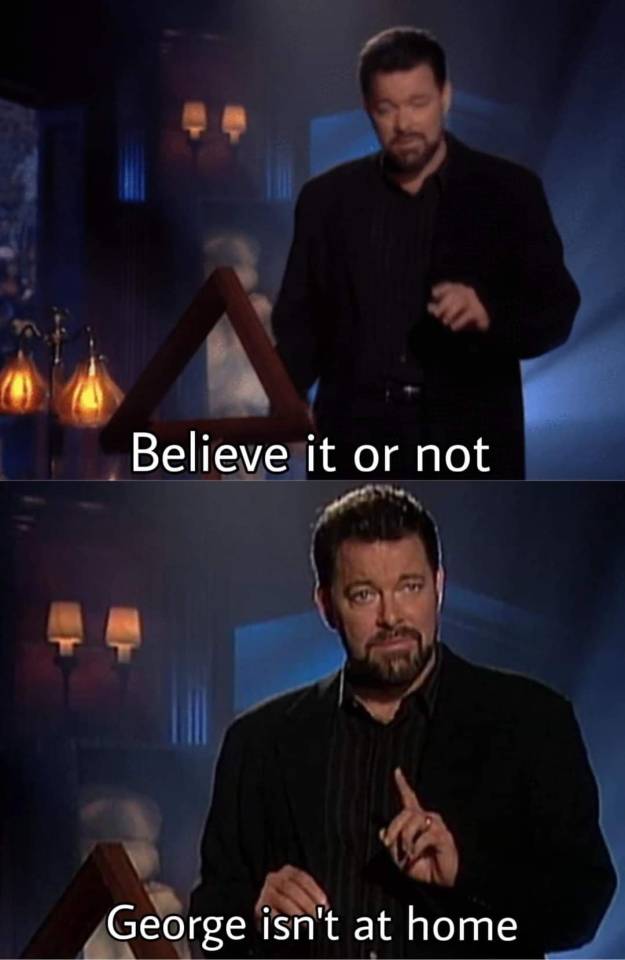
6 notes
·
View notes
Text

Ripley's Belive it or Not! True Ghost Stories #1 - Gold Key, 1965.
96 notes
·
View notes
Text
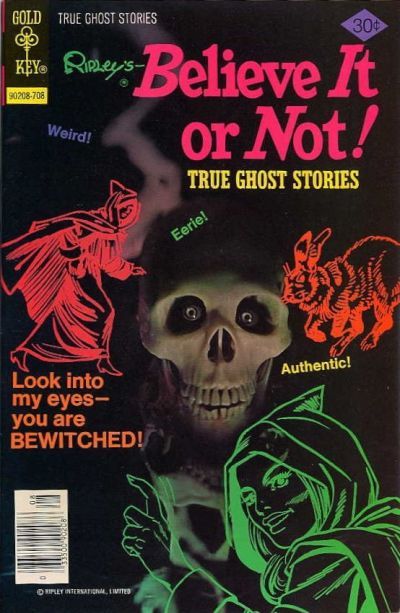
Ripley's Believe It or Not! No.72 (1977)
Line drawings by Frank Bolle
#TRUE GHOST STORIES#gold key#gold key comics#30¢#1977#ripley's believe it or not#frank bolle#jack sparling#win mortimer#paul s. newman
4 notes
·
View notes
Photo
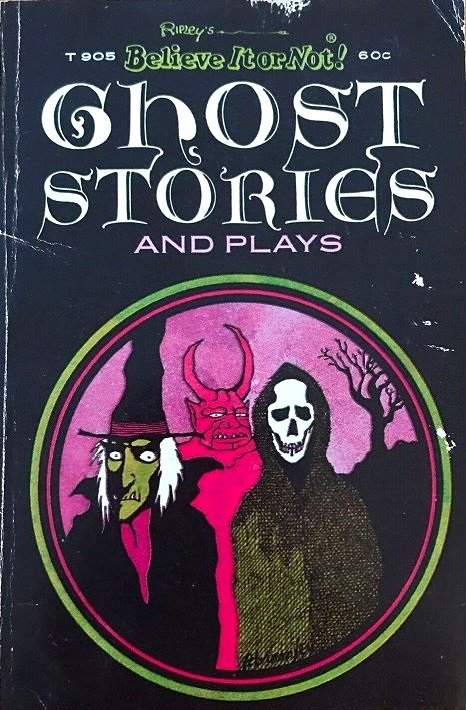
Ripley's Believe It or Not! - Ghost Stories and Plays - Scholastic Book Services - 1971
49 notes
·
View notes